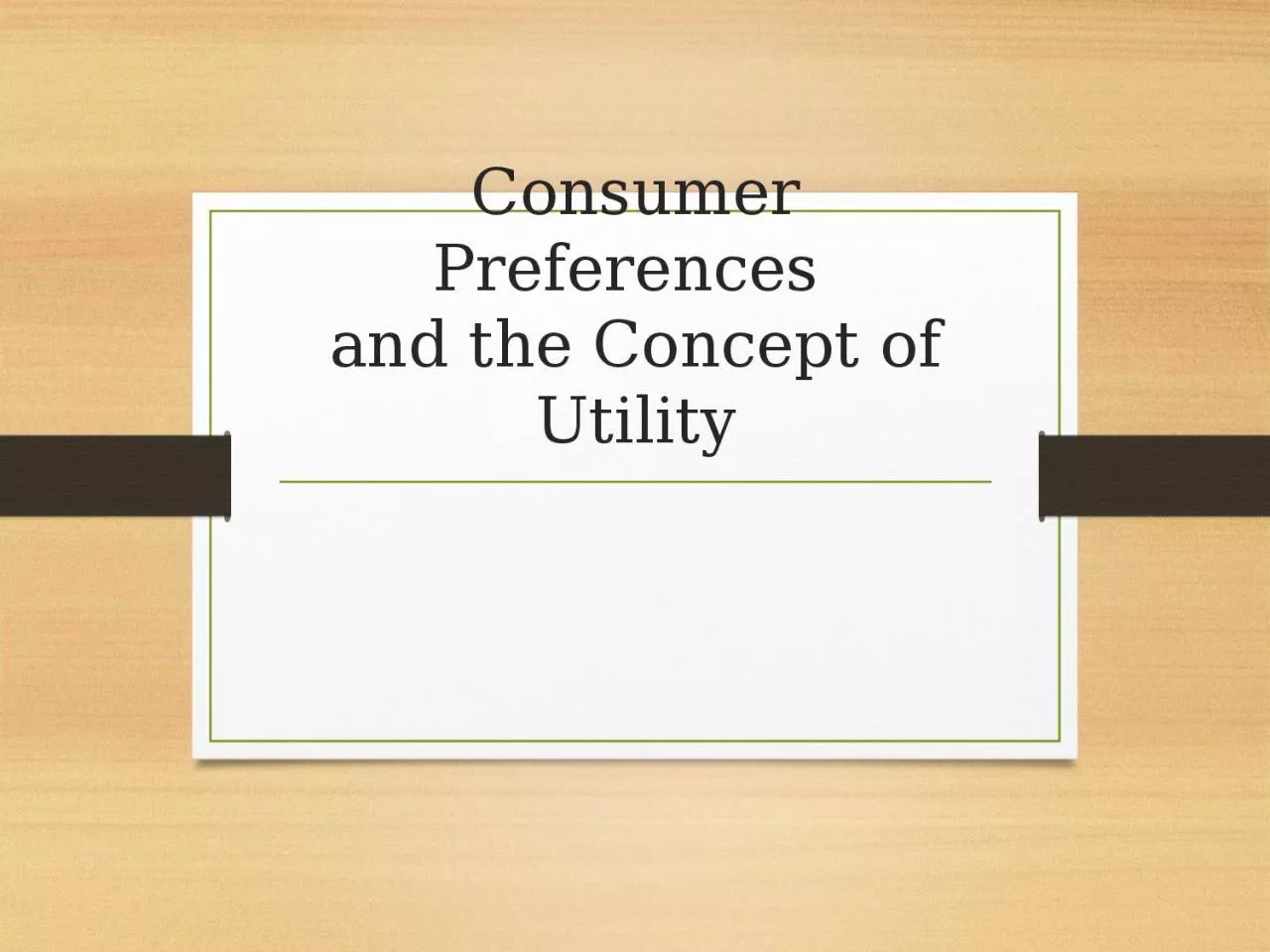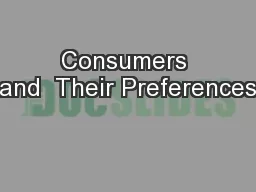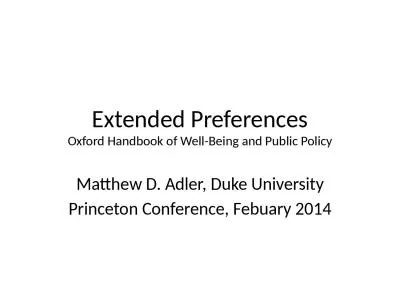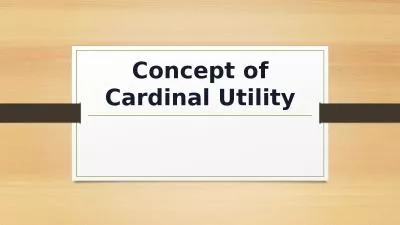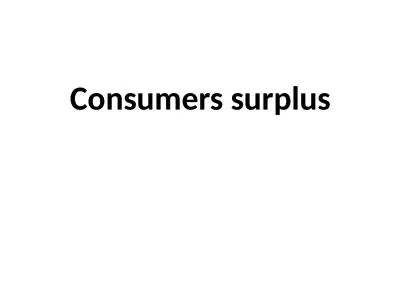PPT-Consumer Preferences and the Concept of Utility
Author : olivia | Published Date : 2023-10-31
Introduction Supply and Demand Models Ch 2 are useful for analyzing economic questions concerning markets How will increasing the real wage affect output In these
Presentation Embed Code
Download Presentation
Download Presentation The PPT/PDF document "Consumer Preferences and the Concept o..." is the property of its rightful owner. Permission is granted to download and print the materials on this website for personal, non-commercial use only, and to display it on your personal computer provided you do not modify the materials and that you retain all copyright notices contained in the materials. By downloading content from our website, you accept the terms of this agreement.
Consumer Preferences and the Concept of Utility: Transcript
Download Rules Of Document
"Consumer Preferences and the Concept of Utility"The content belongs to its owner. You may download and print it for personal use, without modification, and keep all copyright notices. By downloading, you agree to these terms.
Related Documents

